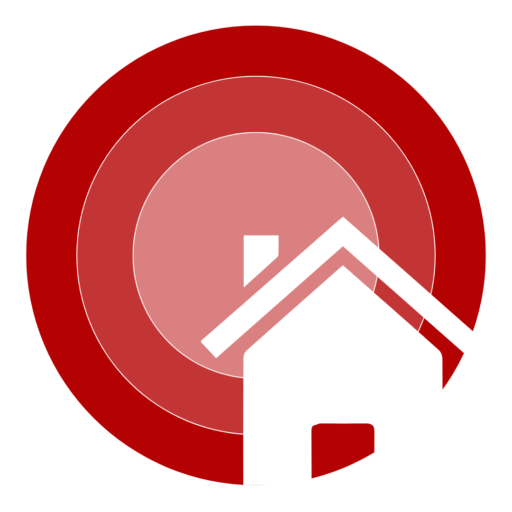Living in Whidbey Island: Discover the Charm of Small-Town Coastal Life
Living in Whidbey Island: Discover the Charm of Small-Town Coastal Life
Thinking about making a move to the Puget Sound area but want more peace, more nature, and a little more breathing room than Seattle can offer?
Then you might want to consider living in Whidbey Island — one of Washington State’s most scenic and surprisingly accessible communities.
Located just 30 miles north of Seattle, Whidbey Island offers a rare combination of small-town charm, waterfront views, and spacious rural living, all without sacrificing proximity to city amenities. Whether you’re a remote worker, a retiree, or just ready for a lifestyle upgrade, living in Whidbey Island could be exactly what you’re looking for.
In this guide, we’ll break down what it’s really like to live here: from housing prices and ferry commutes, to the local schools, outdoor activities, and what makes each part of the island unique.
Let’s dive into what it’s like living in Whidbey Island — and whether this could be your next great move.
Understanding the Regions of Whidbey Island
Living in Whidbey Island means embracing life on a long, narrow island that stretches about 45 miles from tip to tip. It’s the largest island in Washington State and sits right in Puget Sound, making it a peaceful retreat that’s still within commuting distance of Seattle and Everett.
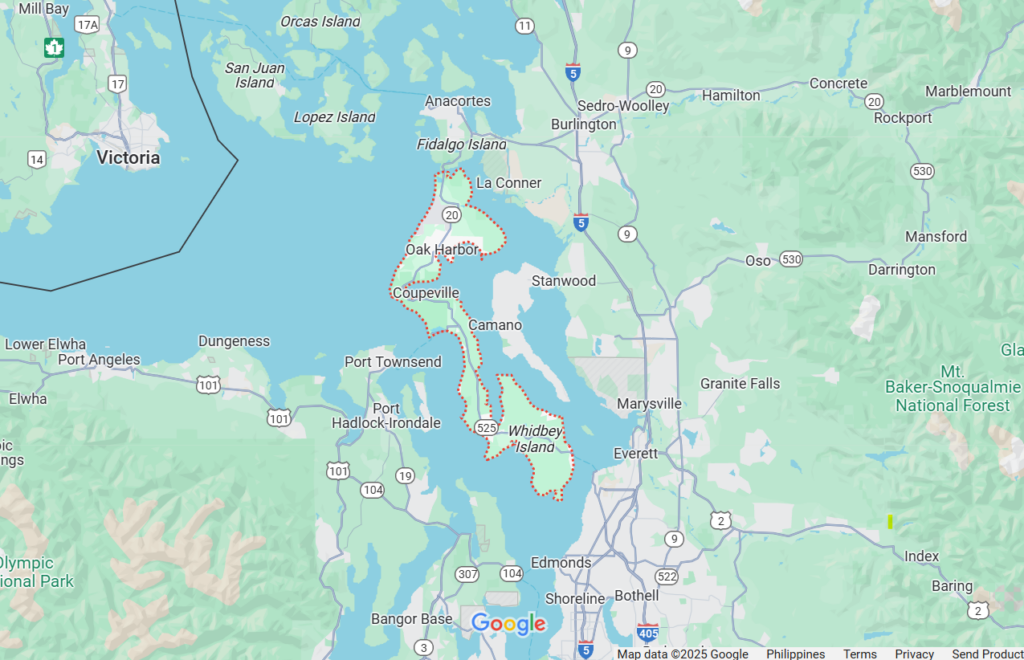
The island is often divided into three main regions:
North Whidbey: Anchored by Oak Harbor, this is the most populous area and home to the Naval Air Station.
- Vibe: Bustling, military-influenced, and practical.
- Features: Naval Air Station Whidbey Island is the largest employer; this area has the most amenities like grocery stores, big-box shopping, and newer housing developments.
- Buyer profile: Popular with military families, first-time buyers, and commuters to Anacortes or Bellingham.
Central Whidbey: Includes historic Coupeville and Ebey’s Landing. This area offers a quiet, rural feel and stunning views of the water and farmland.
- Vibe: Historic, peaceful, and scenic.
- Features: Known for Ebey’s Landing National Historical Reserve, vintage homes, and charming main streets. It’s the heart of the island, literally and culturally.
- Buyer profile: Ideal for those seeking a quieter pace, heritage homes, and views of farmland and the sound.
South Whidbey: Known for its artsy towns like Langley and Clinton, South Whidbey is popular with retirees, second-home buyers, and telecommuters.
- Vibe: Artsy, eclectic, and community-focused.
- Features: Ferry access from Clinton to Mukilteo, cute seaside towns, local art galleries, yoga studios, and weekend farmers markets.
- Buyer profile: Appeals to retirees, second-home buyers, and remote workers looking for a lifestyle upgrade.
There are two main ways to get to and from the island:
- By bridge: Drive across Deception Pass from Anacortes to the north.
- By ferry: Take the Mukilteo–Clinton ferry to access the southern part of the island. Ferries run regularly, and the ride offers postcard-worthy views.


Despite its island status, you’ll find that living in Whidbey Island doesn’t mean being disconnected. You can enjoy forest trails and beachfront strolls one minute, then hop a ferry to grab dinner in the city the next.
Housing & Real Estate: What to Expect When Living in Whidbey Island
If you’re considering living in Whidbey Island, understanding the housing market is essential. The island offers a wide variety of properties—from historic waterfront cottages to newly built homes on acreage—suited for retirees, military families, remote workers, and investors alike.
Market Overview
- Median Home Price: As of February 2025, the median sale price on Whidbey Island is approximately $615,280, a 26.2% increase year-over-year.
- Market Speed: Homes are currently selling in a median of 70 days, showing moderate competitiveness in the market.
Regional Breakdown
South Whidbey (Langley, Clinton, Freeland)
- Median Sold Price: Around $767,000 as of April 2025
- Market Conditions: Considered a seller’s market, with limited inventory and strong buyer demand.
Central Whidbey (Coupeville, Greenbank)
- Median Sold Price: Approximately $624,000
- Market Conditions: Currently a more balanced market, offering negotiating room for both buyers and sellers.
North Whidbey (Oak Harbor)
- Median Home Value: Roughly $619,771, showing a 3.7% annual increase
- Market Conditions: Homes go pending in about 27 days, indicating relatively brisk activity.
How Does Living in Whidbey Island Compare to Seattle?
When considering a move, many buyers weigh the benefits of living in Whidbey Island versus staying in or relocating to Seattle. While both offer access to water, nature, and the culture of the Pacific Northwest, their day-to-day lifestyles and housing markets are very different.
Below is a side-by-side comparison of key living metrics:
| Metric | Whidbey Island | Seattle |
|---|---|---|
| Median Home Price | $615,280 | $860,000 |
| Median Days on Market | 70 days | 12 days |
| Population (Est.) | ~70,000 | ~750,000 |
| Commute to Seattle | 60–90 min (ferry + drive) | 15–45 min (traffic-dependent) |
| Cost of Living Index | 121 (U.S. avg = 100) | 172 |
| Lifestyle Pace | Quiet, rural, nature-oriented | Fast-paced, urban, tech-driven |
| New Construction Availability | Limited due to geography/zoning | Moderate (condos, infill development) |
Key Takeaways: Living in Whidbey Island vs. Seattle
- Affordability: Whidbey Island offers significantly more home for your money than Seattle, especially for buyers seeking land, views, or space.
- Pace of Life: Whidbey provides a slower, nature-connected lifestyle that appeals to retirees, remote workers, and second-home buyers.
- Commute Tradeoffs: While ferry and bridge access make commuting to Seattle possible, it’s best suited for hybrid or remote work lifestyles.
- Investment Angle: With rising demand and limited new construction, Whidbey Island properties hold long-term appreciation potential and vacation rental appeal.
- Community Feel: Seattle offers culture, tech careers, and convenience, but Whidbey provides a tight-knit community, local events, and access to nature that’s hard to match.
Living in Whidbey Island may not offer the hustle of a tech city, but if peace, space, and water views are part of your dream lifestyle, it’s worth a serious look.
Lifestyle & Things to Do
When it comes to quality of life, living in Whidbey Island offers a unique balance of natural beauty, creative community, and small-town charm. Whether you’re an outdoor enthusiast, an artist, or simply looking to unwind away from the city bustle, there’s something here for everyone.
Outdoor Recreation
One of the top reasons people love living in Whidbey Island is access to nature—right outside your door.
- Deception Pass State Park: Washington’s most-visited state park, offering hiking, boating, tidepooling, and iconic bridge views.
- Ebey’s Landing National Historical Reserve: A blend of preserved farmland and coastal bluffs with one of the best sunset hikes in the region.
- Double Bluff Beach: A long off-leash beach for dogs and families near Freeland.
- Kayaking, fishing, and crabbing in Penn Cove and Puget Sound are popular year-round.
Arts, Culture & Community Events
- Langley hosts seasonal festivals, art walks, and open-air theater at Whidbey Island Center for the Arts.
- Coupeville’s Penn Cove MusselFest draws food lovers every spring.
- Farmers markets in Bayview, Oak Harbor, and South Whidbey run spring through fall and showcase local produce, crafts, and live music.
- The island has a vibrant community of writers, painters, and makers, many of whom relocated here for the slower pace and creative inspiration.
Food & Drink
- Wineries: Whidbey Island Winery and Spoiled Dog Winery offer tastings and tours.
- Restaurants: Farm-to-table dining is a staple here, with top picks like Orchard Kitchen in Langley and Gordon’s on Blueberry Hill in Freeland.
- Local specialties: Don’t miss Penn Cove mussels, Whidbey Island Ice Cream, and roadside farm stands for fresh eggs, berries, and flowers.
Family & Community Life
- Safe, quiet neighborhoods with access to public parks, beaches, and hiking trails.
- Volunteer opportunities and local clubs, from Rotary to garden societies.
- Island Transit offers free public transportation, helping teens, seniors, and non-drivers stay mobile and connected.
Internet & Remote Work
Many residents work from home thanks to improvements in broadband infrastructure in recent years. While some rural areas may have spotty service, areas like Langley and Oak Harbor are generally well-connected with fiber or high-speed cable options.
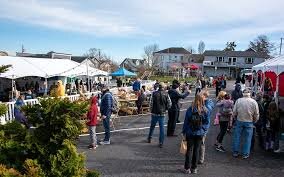
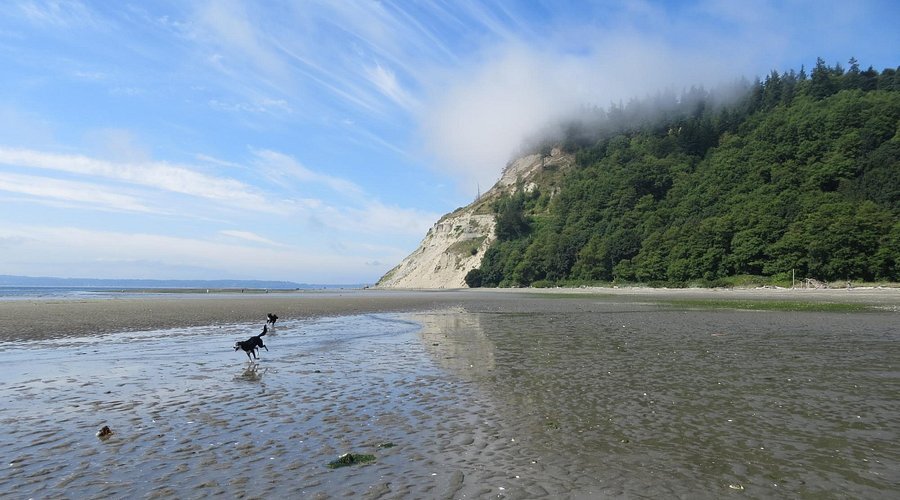
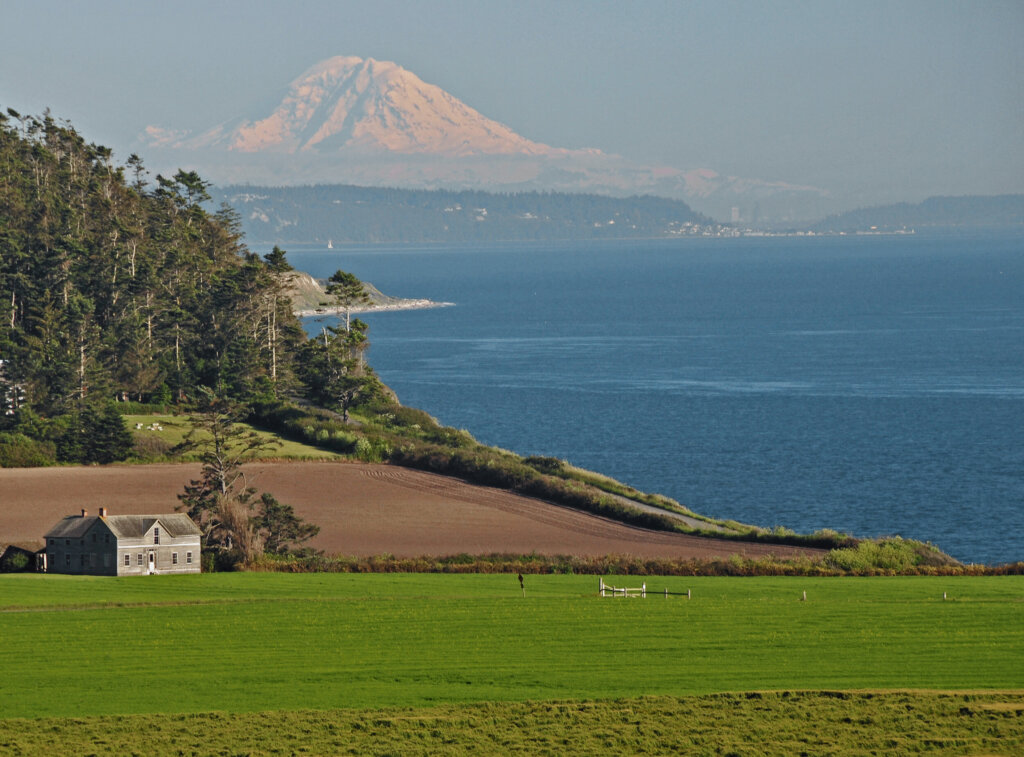
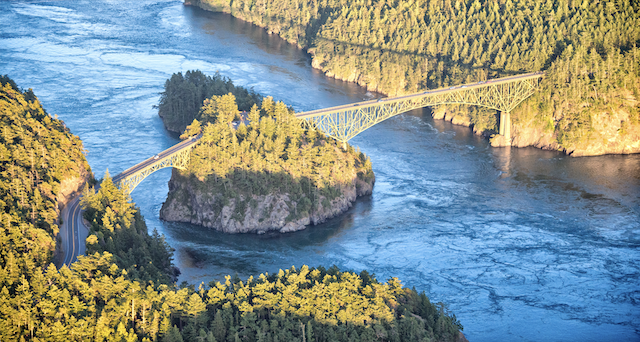
Schools & Services While Living in Whidbey Island
If you’re planning on living in Whidbey Island with a family or are just thinking long-term, it’s important to understand the educational and essential services available. Whidbey may feel remote, but residents have access to quality public schools, healthcare, and community infrastructure.
Public School Districts
Whidbey Island is served by three public school districts, each covering a different region of the island:
South Whidbey School District (Langley, Clinton, Freeland)
- Known for strong community involvement and arts integration.
- South Whidbey High School earns a B+ rating on Niche.com.
- District enrollment: ~1,200 students.
- Focus areas include experiential learning, sustainability programs, and small class sizes.
Coupeville School District (Central Whidbey)
- Smaller district with around 850 students.
- Coupeville High School receives a B rating on Niche.com.
- Ebey’s Reserve surroundings provide unique outdoor learning opportunities.
Oak Harbor School District (North Whidbey)
- The largest district on the island, serving ~5,500 students.
- Oak Harbor High School is rated B+ on Niche.com.
- Strong ROTC, STEM, and career & technical education programs, thanks to the area’s Navy presence.
Private & Alternative Schools
- Whidbey Island Waldorf School (Clinton) offers K–8 education with a holistic focus.
- Wellington Day School and Island Christian Academy offer additional private options.
- Homeschool networks and co-ops are active, particularly on South Whidbey.
Health & Medical Services
- WhidbeyHealth Medical Center (Coupeville): Full-service hospital with emergency services, primary care, and specialty clinics.
- WhidbeyHealth Primary Care Clinics: Located in Oak Harbor, Coupeville, and Clinton.
- Additional providers include dentists, physical therapists, naturopaths, and mental health professionals.
Internet, Utilities & Daily Services
- Internet: Whidbey Telecom offers fiber internet in South Whidbey. North and Central areas also have Comcast/Xfinity and Ziply Fiber options.
- Utilities: Managed locally by Puget Sound Energy (electricity), Island Disposal (waste), and various well/septic systems depending on the property.
Libraries & Learning Resources
- Island-wide branches of the Sno-Isle Library System provide access to books, online databases, community events, and free Wi-Fi.
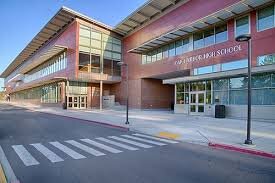
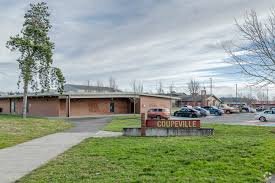
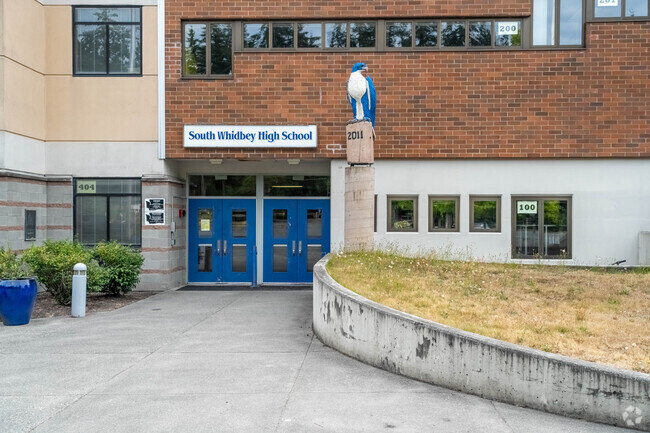
Whidbey Island High School Comparison
| School | Location | GreatSchools Rating | Niche Grade | Niche User Rating | Highlights |
|---|---|---|---|---|---|
| South Whidbey High School | Langley | 10/10 | B | 3.47/5 | Offers AP courses, Project Lead The Way curriculum, and a Gifted & Talented program. Recognized for strong community involvement and arts integration. |
| Coupeville High School | Coupeville | 6/10 | B | 3.73/5 | Provides AP courses and a Gifted & Talented program. Noted for its small-town, family-like environment and supportive community. |
| Oak Harbor High School | Oak Harbor | 6/10 | B+ | 3.84/5 | Features AP courses and a variety of extracurricular activities. Recognized for its diverse programs and inclusive environment. |
Key Takeaways:
- South Whidbey High School stands out with a perfect 10/10 rating from GreatSchools, indicating exceptional performance in academics and equity. Its emphasis on arts and community involvement makes it a top choice for families valuing a well-rounded education.
- Coupeville High School offers a close-knit community atmosphere, which can be beneficial for students seeking personalized attention. While its GreatSchools rating is average, the school’s environment and programs are well-regarded by students and parents.
- Oak Harbor High School provides a broad range of programs and has the highest Niche user rating among the three, suggesting strong student satisfaction. Its B+ grade reflects solid academic offerings and extracurricular opportunities.
When considering living in Whidbey Island, understanding the educational landscape is crucial. Each of these schools offers unique strengths, catering to different family needs and preferences. If you require more detailed information on specific programs or enrollment processes, feel free to ask!
Commute & Transportation While Living in Whidbey Island
One of the most common questions from homebuyers considering living in Whidbey Island is: “How do I get on and off the island—and how long does it take?” The good news is, Whidbey Island offers two main points of access and a surprisingly efficient local transit system, depending on your needs and lifestyle.
Getting On and Off the Island
Whidbey Island is accessible by both bridge and ferry:
- Deception Pass Bridge (North End):
Connects Whidbey Island to Fidalgo Island and Anacortes. Open 24/7 with no tolls, it’s ideal for those living in or near Oak Harbor who want reliable mainland access. - Clinton–Mukilteo Ferry (South End):
Operated by Washington State Ferries, this route connects South Whidbey to the mainland near Everett. The crossing takes about 20 minutes, and ferries run approximately every 30 minutes during peak hours (WSDOT Ferry Schedule).
Commute Times
| Origin | Destination | Average Commute Time |
|---|---|---|
| Langley to Seattle | 90–120 minutes (ferry + drive) | Ferry + car or Sounder train |
| Oak Harbor to Everett | 60–75 minutes | Bridge + I-5 |
| Coupeville to Boeing (Everett) | ~75–90 minutes | Ferry + Highway 525/405 |
Pro Tip: If you’re commuting daily, many residents time their day around the ferry schedule or choose to live closer to Deception Pass for consistent mainland access.
Local Transportation
- Island Transit:
Free public transportation system offering fixed-route buses, paratransit, and commuter service. Routes run from early morning to early evening, Monday–Saturday. Great for students, seniors, and eco-conscious residents.
Learn more at islandtransit.org. - Park & Rides:
Located in Clinton, Coupeville, and Oak Harbor, allowing for easy car-to-bus or ferry transitions. - Cycling & Walking:
South Whidbey has a growing network of multi-use trails and quiet backroads ideal for cycling and recreation.
Considerations for Remote Workers
If your work-from-home setup depends on fast internet, many neighborhoods—especially in South Whidbey—offer gig-speed fiber through Whidbey Telecom. More rural and forested areas may still rely on DSL or satellite, so checking service coverage before you buy is key.
- Ferry schedules (Clinton–Mukilteo), bridge access (Deception Pass).
- Park & ride options, public bus (Island Transit is free).
- Distance to Seattle, Everett, and Bellingham.
Who Is Whidbey Island For?
Living in Whidbey Island isn’t for everyone—and that’s exactly why it’s so appealing to those who do fall in love with it. From young families to retirees, this island community attracts people looking for a lifestyle that balances peace, nature, and character.
So, who tends to thrive here? Here’s a breakdown of the types of residents who typically enjoy living in Whidbey Island:
- Remote Workers: Enjoy a peaceful environment, reliable high-speed internet in many areas, and stunning views from your home office.
- Retirees: Appreciate the slower pace, natural surroundings, walkable small towns, and strong local healthcare access.
- Military Families: Benefit from proximity to Naval Air Station Whidbey Island and more affordable housing options in Oak Harbor.
- Artists & Creatives: Find inspiration in Whidbey’s natural beauty and participate in a vibrant arts scene centered in Langley.
- Nature Enthusiasts: Revel in island life surrounded by beaches, forests, hiking trails, and wildlife—ideal for kayaking, biking, or birdwatching.
- Young Families: Value the island’s strong sense of safety, good public schools, and family-friendly events and parks.
Pros and Cons of Living in Whidbey Island
| Pros | Cons |
|---|---|
| Affordable housing compared to Seattle | Longer commute times to metro areas |
| Access to beaches, trails, and outdoor recreation | Limited nightlife and entertainment options |
| Tight-knit community with friendly neighbors | Fewer large retailers and services (some big-box stores only in Oak Harbor) |
| Good public schools and low crime rates | Internet can be limited in rural zones |
| Free public transportation via Island Transit | Ferry delays can impact schedules during holidays or storms |
| Strong arts and farmers market culture | Less diversity in dining and cultural events than in a city |
Is Living in Whidbey Island Right for You?
Whether you’re dreaming of a quiet waterfront retreat, looking to raise your family somewhere with space to grow, or planning a lifestyle shift that brings you closer to nature, living in Whidbey Island offers something truly unique.
This isn’t suburbia. It’s not city living. It’s a community built around salt air, open skies, and neighbors who know your name. With a range of housing options, solid schools, and access to both outdoor adventure and the mainland, Whidbey continues to attract people who want more life in their lifestyle.
Of course, no place is perfect. Ferry lines, longer commutes, and rural quirks come with the territory. But for many, the peace, beauty, and connection more than make up for it.
Ready to Explore Living in Whidbey Island?
I’m Emily Cressey with HomePro Associates at Keller Williams Greater Seattle.
Whether you’re looking to buy, sell, or simply get a feel for the market, I’m here to offer real insight—not pressure.
- 📞 Call or text me directly at (206) 578-3438
- 📧 Prefer email? Reach out at Emily@HomeProAssociates.com
- 📅 Book a one-on-one consultation anytime at HomeProAssociates.com
- ▶️ For neighborhood tours, market updates, and real estate tips, follow along on YouTube: @HomeProAssociates
If you’re thinking about living in Whidbey Island, let’s talk about what that move could look like for you.

Tell Us What You Need!
We would love to hear from you! Please fill out this form and we will get in touch with you shortly.
